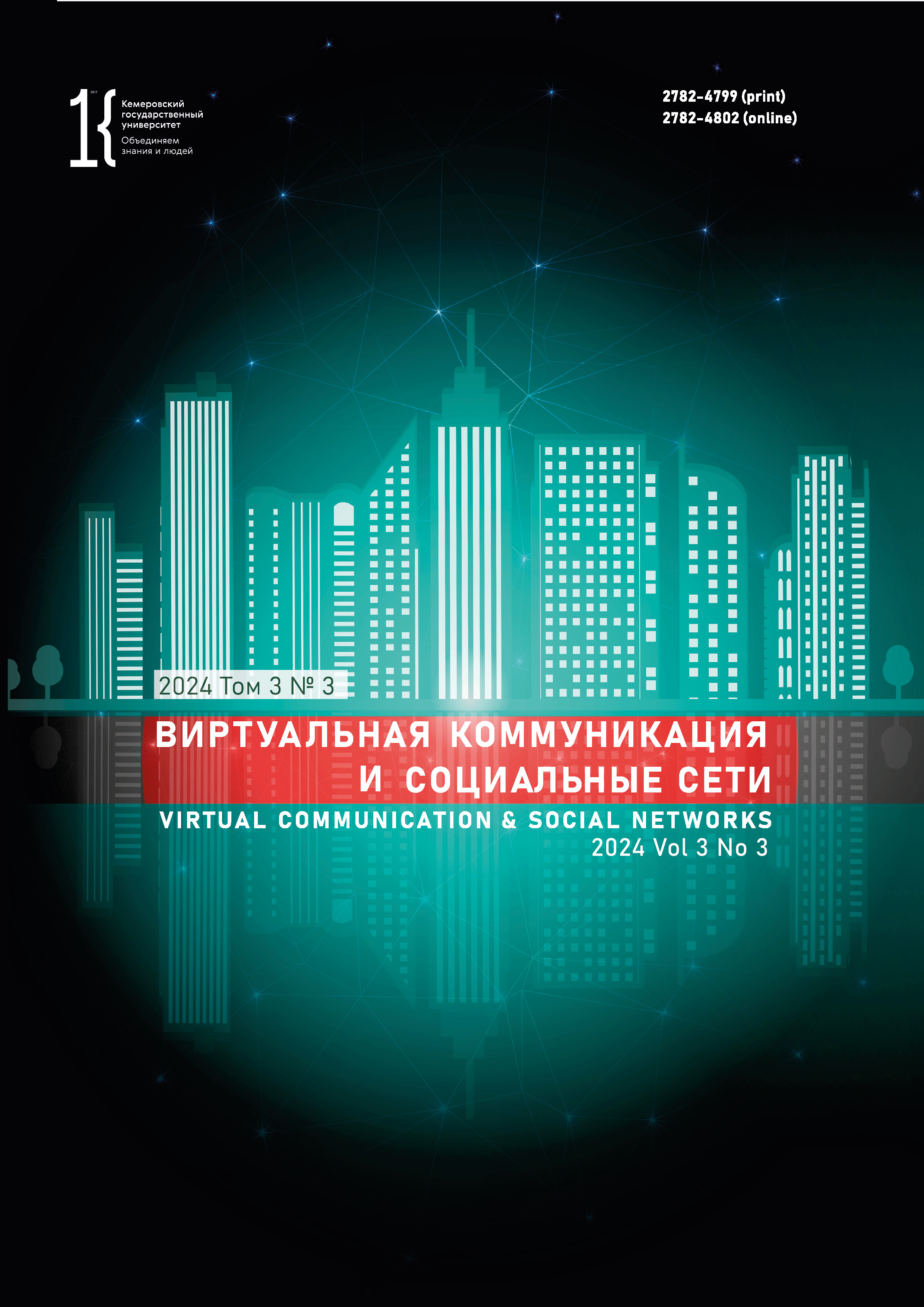Kemerovo, Russian Federation
Kemerovo, Kemerovo, Russian Federation
Deviant behavior is a popular research topic. The article examines interdisciplinary approaches to its causes, types, and consequences in university students. Constructive deviation is a relatively new phenomenon, which requires systematization and formalization. The current socio-political changes encourage certain socially significant values and helping behavior practices, which makes it possible to develop social resources, as well as social, intellectual, and civic potential in young people. The authors studied internet activities of first-year university students to reveal the social and political prerequisites of constructive deviation. These foundations included the institutional conditions for the development and implementation of the state youth policy, youth initiatives, helping behavior practices, hypernormality, such socially significant values as patriotism and altruism, etc. The sociological interpretation of constructive deviation clarifies the challenges that are relevant for young people and directions for their social consolidation.
deviation, constructive deviation, youth, student, social activism, civic activism, political interests, hypernormality, network communities
1. Giddens E. The structure of society: An essay on structure theory. Moscow: Akad. Proekt, 2005, 528. (In Russ.) https://elibrary.ru/tnirkp
2. Girenok F. I. Clip consciousness. Moscow: Prospekt, 2016, 256. (In Russ.) https://elibrary.ru/onrdip
3. Gulevitch O. A. Counterproductive activity in the organization: Definition, types, factors. Organizational Psychology, 2013, 3(4): 49–58. (In Russ.) https://elibrary.ru/tounfx
4. Davydova M. A., Kravchuk I. D. Discourses and technologies of external destructive information and psychological impact in regional segments of social media. Vlast, 2024, 32(1): 16–23. (In Russ.) https://elibrary.ru/dbwfdb
5. Yefanov A. A. Structure of symbolic capital in the modern communication environment: Digital network progression. Digital Sociology, 2023, 6(2): 51–57. (In Russ.) https://doi.org/10.26425/2658-347X-2023-6-2-51-57
6. Zadorozhnyuk E. G. [Rev.] Gorshkov M. K., Sheregi F. E. Russian youth in the mirror of sociology. To the results of many years of research. Moscow: FNISC RAN PUBL., 2020. Sotsiologicheskiy Zhurnal, 2020, 26(4): 188–196. (In Russ.) https://doi.org/10.19181/socjour.2020.26.4.7650
7. Komlev Yu. Yu. Restrictive social control and improvement of the prevention of extremism in the youth environment. Bulletin of the Kazan Law Institute of MIA Russia, 2010, (2): 3–12. (In Russ.) https://elibrary.ru/paecwv
8. Nastina E. A. Moderators of the connection between pro-social behavior and life satisfaction. Sotsiologicheskiy Zhurnal, 2022, 28(3): 57–71. (In Russ.) https://doi.org/10.19181/socjour.2022.28.3.9151
9. Nyatina N. V. Constructive possibilities of deviant behavior in youth: Praxeological significance of sociological research in the late XIX – early XX centuries. Alma Mater (Vestnik Vysshey Shkoly), 2018, (5): 103–106. (In Russ.) https://doi.org/10.20339/AM.05-18.103
10. Skopin A. Yu., Klimov A. I., Zaitsev D. G. Actor approach in modern social sciences: economics, sociology, and political science. 2013. (In Russ.)
11. Usova L. P. Improving of the creative deviation of students: Social policy. Vestnik Zabaikalskogo gosudarstvennogo universiteta, 2015, (8): 88–96. (In Russ.) https://elibrary.ru/vdlitr
12. Filonenko V. I., Magranov A. S. Concerning the social well-being of students in modern Russia. Sotsiologicheskie issledovaniya, 2024, (1): 162–164. (In Russ.) https://elibrary.ru/tcsmkh
13. Carlo G., Hausmann A., Christiansen S., Randall B. A. Sociocognitive and behavioral correlates of a measure of prosocial tendencies for adolescents. The Journal of Early Adolescence, 2003, 23(1): 107–134. http://dx.doi.org/10.1177/0272431602239132
14. Galperin B. L. Exploring the nomological network of workplace deviance: Developing and validating a measure of constructive deviance. Journal of Applied Social Psychology, 2012, 42(12): 2988–3025. https://doi.org/10.1111/j.1559-1816.2012.00971.x
15. Henslin J. M. Essentials of sociology: A down-to-earth approach. Boston: Allyn & Bacon, 2004, 544.
16. Koutsouris G., Stentiford L., Norwich B. A critical exploration of inclusion policies of elite UK universities. BERJ, 2022, 48(5): 878–895. https://doi.org/10.1002/berj.3799
17. Kranzeeva E. A., Golovatsky E. V., Orlova A. V., Nyatina N. V., Burmakina A. L. Assessing the effectiveness of social and political innovations in the development of interaction between the authorities and the population during COVID-19: The implication of open innovation. Journal of Open Innovation: Technology, Market, and Complexity, 2021, 7(3): 172. https://doi.org/10.3390/joitmc7030172
18. Liska A. E., Krohn M. D., Messner S. F. Strategies and requisites for theoretical integration in the study of crime and deviance. Theoretical integration in the study of deviance and crime: Problems and Prospects, eds. Messner S. F., Krohn M. D., Liska A. E. Albany: SUNY Press, 1989, 1–20.
19. Nilholm C. Research about inclusive education in 2020 – How can we improve our theories in order to change practice? European Journal of Special Needs Education, 2021, 36(3): 358–370. https://doi.org/10.1080/08856257.2020.1754547
20. Organ D. W., Podsakoff P. M., MacKenzie S. B. Organizational citizenship behavior: Its nature, antecedents, and consequences. Thousand Oaks: SAGE, 2006, 350. https://doi.org/10.4135/9781452231082
21. Warren D. E. Constructive and destructive deviance in organizations. Academy of Management, 2003, 28(4): 622–632. https://doi.org/10.2307/30040751



















